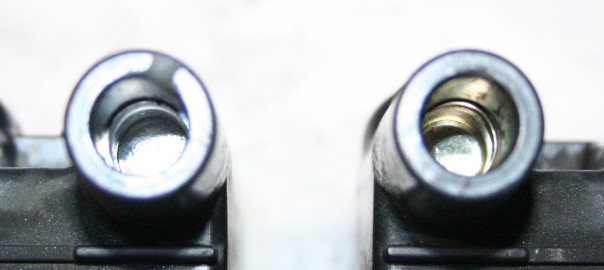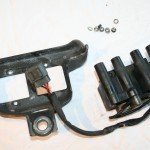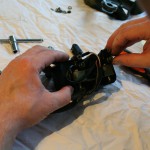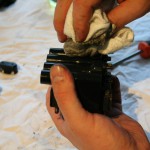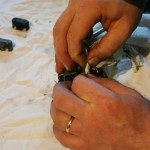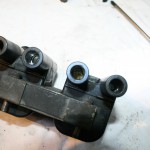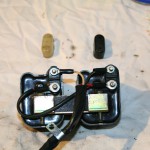While my bug-eyed baby is in the shop for a full respray, let’s flash back to May, when I discovered—ironically, while trying to help someone diagnose an ignition issue—that my coil pack was hanging on by the skin of its teeth.
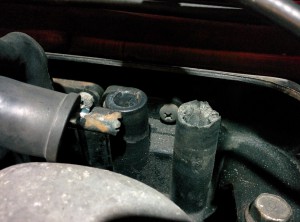
Quick recap: an ignition coil is an engine component that converts the low voltage from the battery to the high voltage required to create the spark used to ignite the fuel-air mixture in the combustion chamber. Coils can be arranged in different ways: a single coil serving multiple cylinders through a mechanical distributor, individual coils for each cylinder, or individual coils for each pair of opposite cylinders. In the latter case, each spark plug fires twice per cycle: once at the end of the compression stroke, to ignite the fuel-air mixture, and once (needlessly but harmlessly) at the end of the exhaust stroke, which coincides with the end of the opposite cylinder’s compression stroke. The Miata‘s four-cylinder B6 engine uses this “wasted spark” arrangement with a coil pack consisting of two coils around a shared laminated iron core, mounted in a frame between the rear of the engine and the firewall. Each coil has two sockets numbered (from driver’s left to driver’s right) #4, #1, #2 and #3. The numbers correspond to the cylinders served by the coils: the left coil serves the rear (#4) and front (#1) cylinders, and the right coil serves the middle two (#2 and #3).
The ignition current is delivered from the coil to the spark plug by an HT lead, which is little more than a high-quality electrical wire with connectors at each end that fit in a socket on the coil and onto the spark plug (with the engine block serving as the return path). If the connection between the HT lead and the coil socket is poor (be it due to dirt, corrosion, mechanical damage or other causes), the current will arc across the gap, resulting in damage to both the lead and the socket. In my case, the arcing developed enough heat to bake the plastic casing, causing it to crumble when I pulled the lead out.
A new coil pack would have set me back quite a bit, so I got hold of a used one and refurbished it. The slideshow below illustrates the process.
I fitted the refurbished coil pack with new 8 mm HT leads and it fired right up. Four months and a few thousand kilometers later and the plugs and sockets are still shiny.
The only issue remaining is that the new coil pack’s bracket is cracked, as shown in the pictures above. The old coil pack has separate cores for each coil, while the new one has a shared core for both coils, so while the brackets are nearly identical, the screw holes don’t line up. I need to drill new holes in the old bracket so the new coil pack will fit. I didn’t have a drill bit of the correct diameter available and was impatient to get the car back on the road, so I’ve been driving around with a cracked bracket. It hasn’t shaken loose yet—knock on wood.
If any other Miata owners read this, I’d love to hear from you about the condition of your coil pack and especially about any uneven wear or corrosion on coil sockets and HT lead tips. I have a hunch that the #4 socket is particularly vulnerable, although I have no idea why.
